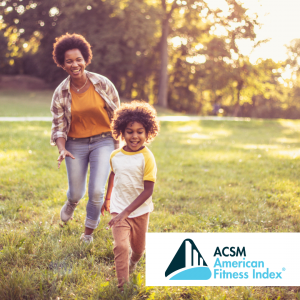
Parks, trails, and greenways are an important part of a community. They are places where people can move, relax, and enjoy time with others. A new Community Preventive Services Task Force (CPSTF) recommendation shows that science backs up the idea that these places can help people be physically active.
But simply having these community spaces is not enough. Additional efforts are needed to help people use these spaces to increase their physical activity.
What is the new recommendation?
To increase physical activity, CPSTF recommends park, trail, and greenway infrastructure interventions when combined with additional interventions. Infrastructure interventions include improvements to built and natural environments. Additional interventions include structured programs, like walking groups, fitness classes, and organized sports, as well as efforts to improve community engagement, enhance access, or increase awareness.
When these interventions are combined, the number of people who use parks, trails, and greenways—and use them specifically to get moderate-to-vigorous physical activity—increases.
CPSTF also suggests that communities work with partners across sectors to identify barriers to access and use of green spaces and ensure equity, engagement, safety, and accessibility for all populations.
What are the benefits of physical activity and green spaces?
Physical activity is one of the best things people can do to improve their health. And being active in nature has physical, mental, and social benefits. For example, people who have more access to green environments tend to move more than people with limited access. Specifically, people who live close to a park and feel safe there are more likely to walk, roll, or bike to the park and use it for physical activity.
Outdoor recreation areas also provide places where people can observe or interact with nature, reduce stress, and improve their mental health. They provide places where families can play and neighbors can meet, which can improve family and community connections.
Parks can also provide environmental benefits by reducing air and water pollution, protecting areas from inappropriate development (for example, on flood plains or steep slopes), and mitigating urban heat islands. They help reduce the risk of illness and injury by providing safe spaces where people can play and be active away from busy streets and commercial zones.
Although everyone should have access to these benefits, long-standing, systemic social inequities have led to some populations living in areas with limited park, trail, or greenway access. This inequity may increase their risk of being physically inactive and having associated chronic disease conditions.
Cross-sector partnerships can help address inequities and barriers to physical activity through interventions that enhance community engagement, raise awareness of natural environments, and improve access to safe opportunities for outdoor activity in these environments.
How is the CPSTF recommendation relevant to the American Fitness Index?
Several indicators in the American Fitness Index address recreational and natural environments. By developing new, high-quality parks, trails, and greenways, especially in historically underserved areas, communities could improve their score in two areas: parks per 10,000 residents and the percentage of residents within a 10-minute walk to a park. Communities could also improve their community/environment score by enhancing their park-based recreational facilities. They could improve their personal health score by improving park access, which will help residents be more physically active and have strong personal fitness.
How does the CPSTF recommendation support Active People, Healthy Nation?
Active People, Healthy NationSM is a national initiative led by CDC to help 27 million people become more physically active by 2027. Creating or enhancing access to places for physical activity—such as building walking trails or providing access to existing nearby facilities—and providing information to encourage their use is one of the initiative’s core strategies to increase physical activity.
The new CPSTF recommendation reinforces this strategy by providing evidence of the relationship between parks, trails, and greenways and increased physical activity.
Visit the Active People, Healthy Nation website to subscribe to the monthly newsletter, share success stories, and learn how to get involved.
Additional Resources
- One Pager: Park, Trail, and Greenway Infrastructure Interventions When Combined With Additional Interventions
A summary of the CPSTF recommendation and supporting evidence. - What’s Your Role? Parks, Recreation, and Green Spaces
An Active People, Healthy Nation document that describes strategies for providing and promoting safe, equitable, and inclusive access to parks, trails, recreation areas, and green spaces.
Disclaimer: The findings and conclusions in this blog post are those of the authors and do not necessarily represent the official position of the Centers for Disease Control and Prevention.
Authors:
Kaitlin Graff, MSW, MPH, Program Coordinator, McKing Consulting Corporation/Physical Activity and Health Branch, Division of Nutrition, Physical Activity, and Obesity, Centers for Disease Control and Prevention
Akimi Smith, MPH, Evaluation Fellow, Physical Activity and Health Branch, Division of Nutrition, Physical Activity, and Obesity, Centers for Disease Control and Prevention
David Brown, PhD, FACSM, Senior Behavioral Scientist, Physical Activity and Health Branch, Division of Nutrition, Physical Activity, and Obesity, Centers for Disease Control and Prevention


